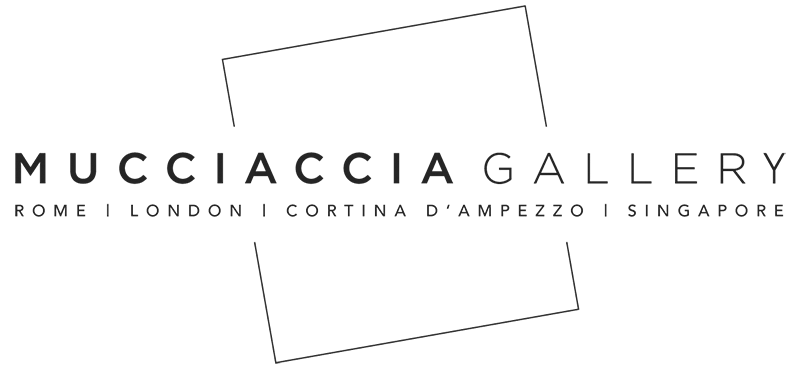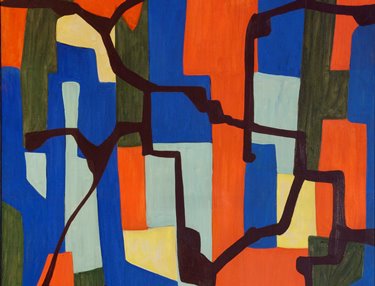METAMORFOSI
Giulio Turcato
ROME | GALLERIA MUCCIACCIA
From 21st October 2010 until 15th January 2011, at Galleria Mucciaccia in Rome will take place the Giulio Turcato solo exhibition. Metamorphosis, by Silvia Pegoraro, realized in collaboration with The Giulio Turcato Archive in Rome. Will be presented about seventy works, which date from the second half of the 40’s to the early 90’s of the Twentieth century: a journey through the whole creative path of the artist, from figuration to abstraction works stylizing of the first “informal” of the Lattice 50’s, the ingenious creation of lunar surfaces of the 60’s, the playful cosmology routes and Archipelagos of the 70’s, to the sumptuous and sensual luminosity of Cangianti (1981-1990).
Giulio Turcato (Mantua, 1912 – Rome, 1995) is considered one of the most significant Italian painters of abstract art, but his work is rather complex, and includes fascinating figurative implications and extraordinary sorties in sculpture and set design. Started from the lesson of Cézanne and Matisse, the Futurists (especially Giacomo Balla), the artist from Mantua, has been able to impose its own rhythmic and dynamic language, making the shape-color the reason of the constant quest. Turcato is an explorer who considered painting the key to interpret the world in all its aspects, biology, entomology, from physics to astronomy: everything becomes an opportunity for new inventions of shapes and colors that redefine the human imagination, individual and collective. What distinguishes the poetic Turcato is an “inner nomadism” that allowed him to deal with abstraction in a radical and anti-conformism way, with determination and lyricism. Thus, the Patterns and the Archipelagos alternate with Cangianti, where the light “works” the color as a kind of musical score. The work of Turcato is as a journey into the imagination where historical moment, existential, transcendence, mystery of beauty, overlap and merge. Emotional and rational control, lyrical abandon and critical attitude are mixed as in a mixture of alchemy, to produce a figure which, recovering the symbol, convey deep meanings, immediately engaging and disturbing. In the 50’s and 60’s, with the affirmation of abstract art Giulio Turcato is inspired by an ideal pictorial universe, which means that he becomes painting everything touched by his imagination, beyond all technique. On the one hand, the abstract language of Turcato proposes a psychologic density that differentiates both the analytical shades and those abstract-nature. On the other hand, his work poses a critical problem still largely ignored, and which can be summarized as proposition of a space-form “random”, in which the term has taken in reference to certain aspects of contemporary musical research. It is therefore not random fascination of Turcato for music and its relationship with major contemporary musicians such as Luciano Berio and Goffredo Petrassi. The eternal and ever-changing Turcato’s demon is color. It is also evident from the writings of the artist, such as the beautiful poetic and psychological analysis of the color purple (fundamental in his research), which is also a hymn to the colors, handed in a manuscript of 1977: “Purple and light glimpsed announcement of darkness / Purple different / Purple principle / colors are our freedom / investing matter and transform / our fantasy is actually new / Purple way out to / inside “. For Turcato purple is pure color. Turcato wants, on the one hand, to liberate perception from its notional or cultural supports, but also, and above all, to grasp in it, integrated and perhaps contaminated by those holders, the trace of a deeper reality, all inscribed track ‘interior of the subject and of which the perception is that the reflection: the “way out to / inside”, as the artist himself defines it. “These images, sensations, materials, memories, illusions, hallucinations, forms, routes have opened my luggage to the customs of the next millennium”: so wrote Turcato in relation to his work. A statement that could be read as a poetic declaration by an artist who has played an essential role in liberating art from the academic conventions.
PUBLICATIONS

Exhibition catalogue, essay by Silvia Pegoraro
Published by Edizioni Mucciaccia
2011
Address
ROME | Galleria Mucciaccia
Largo della Fontanella Borghese, 89
Cap 00186 – Roma
Tel. +39 06.69923801
Fax +39 06.69200634
roma@mucciaccia.com
Opening Hours
Monday – Saturday: 10am – 7:30pm


